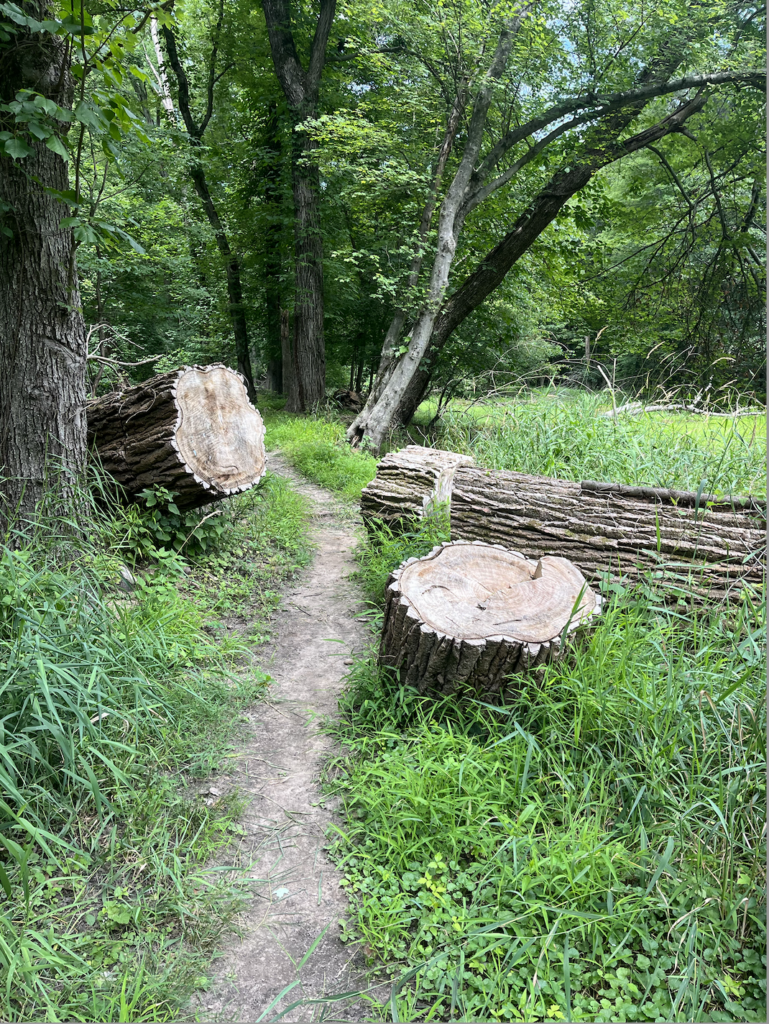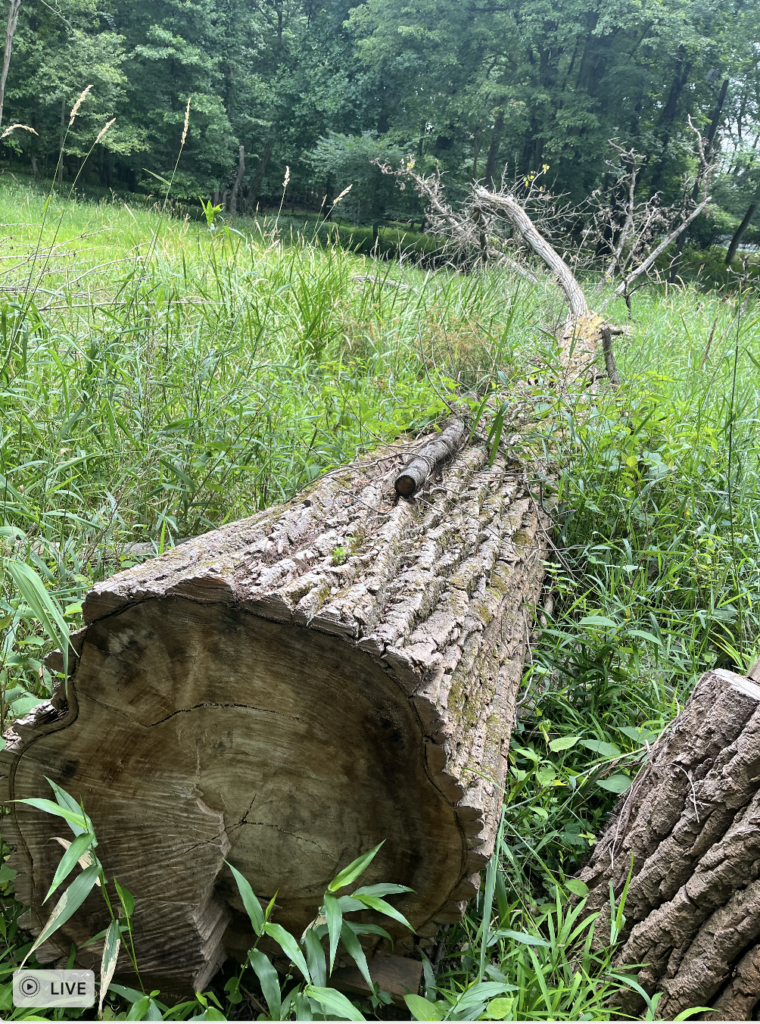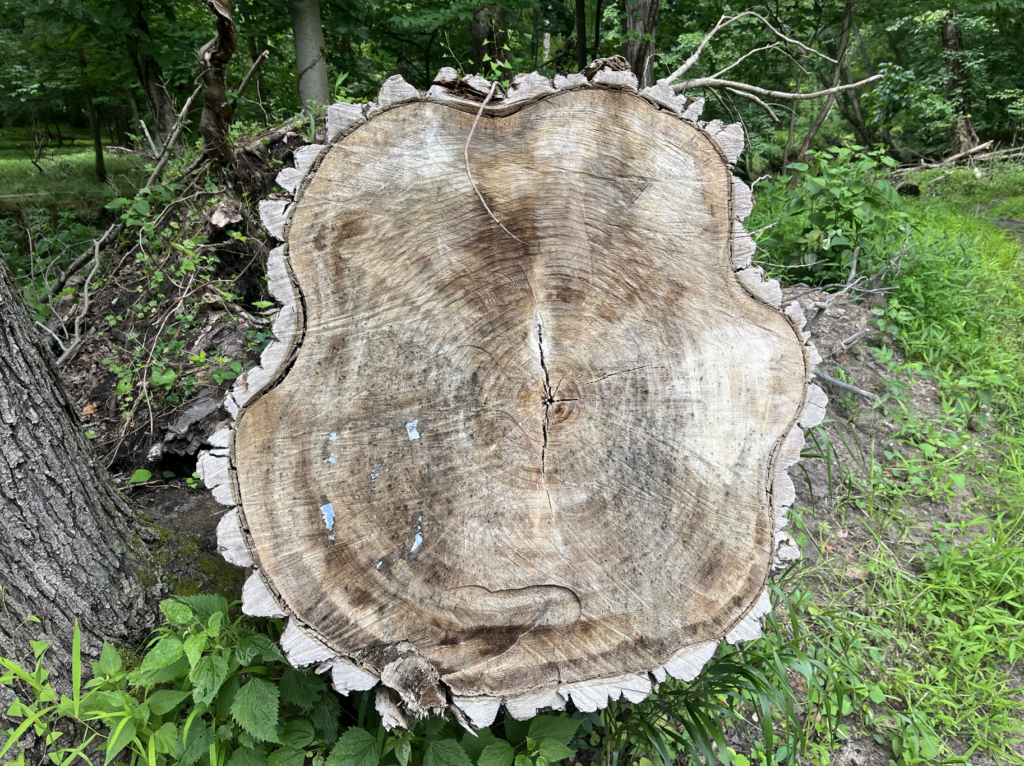This is the trunk of an Eastern Cottonwood tree (also known as a poplar or Populous deltoides). It is is native to North America.
The cottonwood was sacred to many Indigenous American nations , who considered it a symbol of the sun, the birthplace of the stars, or the bridge between earth and sky. During the westward expansion, as European settlers made their way across the prairie, cottonwoods were one of the first trees they encountered.
There are many of these trees scattered throughout the Demarest Nature Center. The tree you are looking at fell during a thunderstorm.
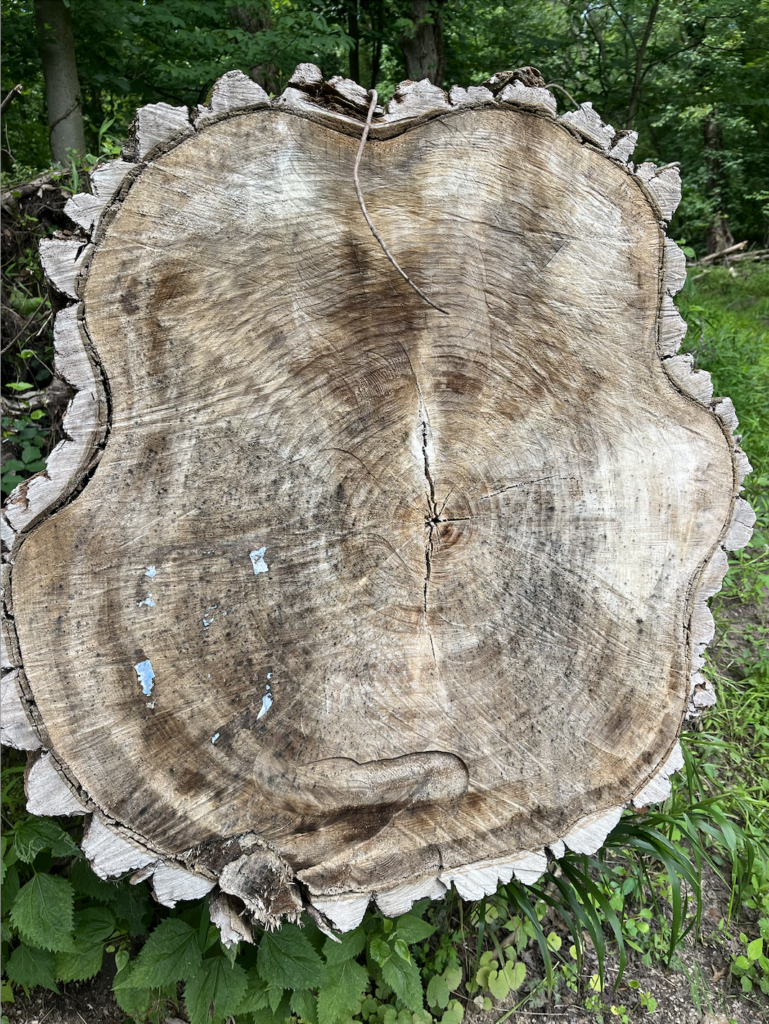
Take a closer look at the tree stump
The coolest thing about this tree is its rings. All trees have rings inside of their trunk. These rings can be wide or narrow, and they help us learn about a tree’s life. The pattern records a tree’s year to year changes in growth. Lighter colored rings represent wood grown in spring and early summer, while the dark rings show the wood that grew in late summer and fall. So, we can figure out that 1 light ring + 1 dark ring = 1 year of a tree’s life. By counting these rings, we can tell that this Cottonwood tree is 75 years old.
Do any of these dates surprise you?
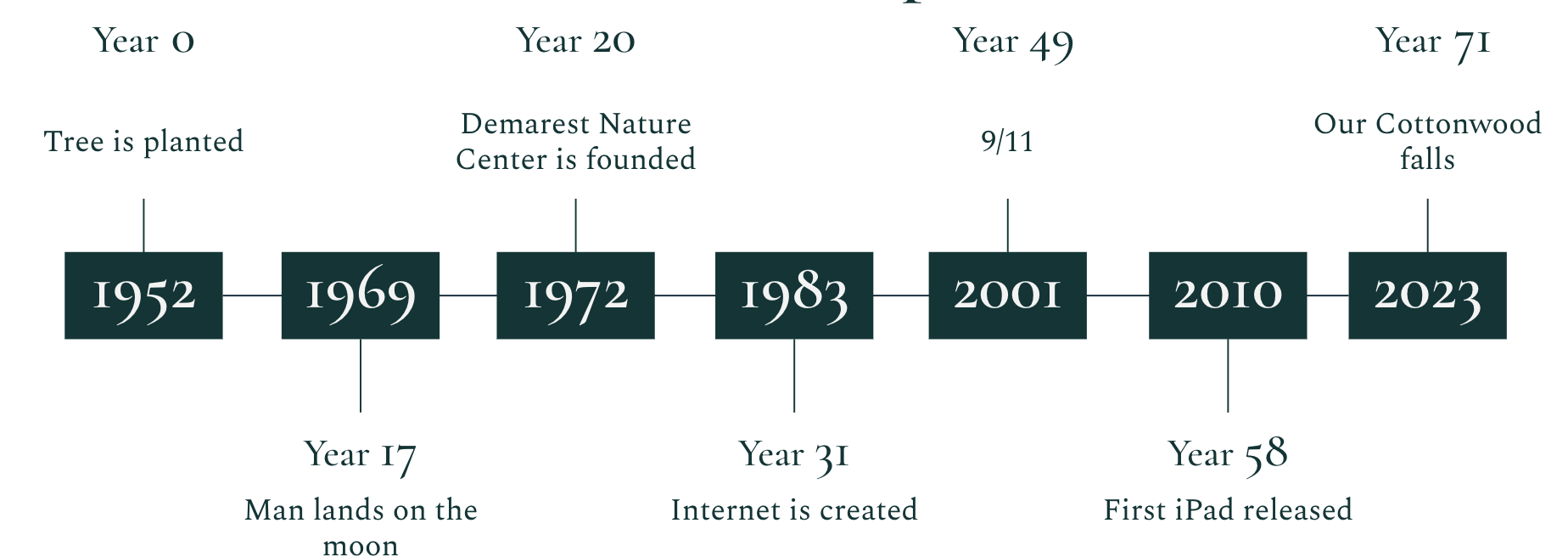
How to Identify a Cottonwood
- Tall (about 70-100 feet)
- Broad, flat leaves, are triangular in shape
- Ash-gray bark
- Fast-growing
- Springtime – produce tiny seeds surrounded by white cotton fibers
